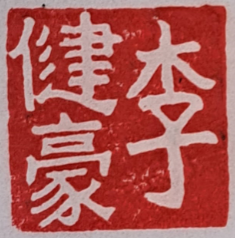There is a restaurant that does what I erroneously pigeonholed Nom Wah Tea Parlor to do: that is, a kind of trendy reinvention of Chinese food, blending together different cuisines. I know it’s a bit of a cheap shot to tear apart the wide-eyed, gastronomically credulous food reviews for the thin basis of historicity they invoke to sell restaurants, but the name of this one, ‘Phoenix Restaurant’, is too good to be true. Rather than one rising from the ashes (and a traceable genealogy, to stretch the family tree metaphor a little), “The food at Phoenix Palace is familiar, but new. It’s Cantonese, American, and even a little Italian. When you get some olive-freckled youtiao, or sticky rice mixed with bits of pancetta, it should feel experimental—but it doesn’t. Bok choy with pecorino? Cuttlefish and tomato jam? Sure, why not. It all works seamlessly.”
It’s actually pretty tasty, although the main draw is surely aesthetic, draped in the same decor that gave its sister restaurant Potluck Club its success, evoking cinemas that would have played Shaw Brothers films in the incredibly anachronistic format of brunch. The gloss on another restaurant on Mulberry Street offers a surprisingly cohesive vision: “Using his connections to local produce vendors, fishmongers, butchers, grocers, and seasoned cooks, the menu at Uncle Lou is meant to bridge the generations, while welcoming all to enjoy. The extensive menu is big by design. The “lo wah kiu favorites” takes grandparents back to the Cantonese villages in Toisan, Sunwui, Enping, and Hoiping. ABC’s and “jook sing” are comforted by classic meals they enjoyed between Chinese school and playing in Columbus Park.”
Intergenerational restaurant ownership also collides with celebritydom, as the feature piece by The Face boldly proclaims: “Sandy Liang, Congee Village heiress.” Clad in the language of a working class story, the designer remembers the “pseudo-daycare” that the Cantonese restaurant (back then, still in Queens rather than its current Allen Street location) served as. Its menus were in turn printed wholesale onto her t-shirts, conjuring up for a distant audience the thick, savory porridge and myriad of other dishes (I am fond of the jellyfish) served by the restaurant within its whimsical decoration that evoke an actual village, fake trees and all. She is rightfully dismissive of fashion brand Vetements 2016 efforts to co-opt the imagery of Chinese cooking – “I [had my presentation at a Chinese restaurant] because my dad owns a Chinese restaurant and it makes sense,” she says. “But when a French Margiela-esque brand does it, all of a sudden it’s to be written about” – although her capitalisation of culture in this case is a literal one too, the extension of a real family business into an intellectual and aesthetic capital as the daughter of the owner.
I am close with the daughter of Congee Village’s head chef, a workaholic who spends even his days off cooking, married to another Cantonese who works as a dishwasher in a dim sum restaurant in southern Brooklyn. They live a more modest American dream, not the maximalist artist-entrepreneurial ones of my generation or even of the older Liangs, but one where they’ve put two children through school, allowing them a safe if unmoneyed life.
Other times, my relationship with culinary capitalism is a lot more ambiguous. Food halls have taken over New York City. Their proliferation, as Aaron Timms has noted, serves a more insidious purpose wherever they pop up close to prime real estate, offering “the raw cultural material to keep the adjoining office tower’s occupancy rates high, attract new tenants to the surrounding area, buoy developer returns, and maintain “shareholder value”—everything, in short, that it takes to keep the players with the biggest stakes […] happy. The consumers eat, but only the asset managers get fed.”1
Multicultural in menus but laser-focused on delivering “value” to shareholders – someone must have discovered that Singapore is a microcosm of both, my country’s cuisine reflecting the country’s official four ‘faces’ (Chinese, Malay, Indian, and ‘Other’, the latter being a convenient residual category for catalogues too), and thus Urban Hawker on 50th St was born. I was first recommended the place by an Indonesian friend, and the whole place seems designed to deliver on nostalgia for Singaporeans complete with the sticker shock of paying $18 for a plate of chicken rice known as a street staple back home. The food, however, is good, and even what Timms describes as the “curiously isolated sociability” of the blurred public-private spaces, down to returning one’s utensils and trays, has already been a staple of Singaporean life. If there is a category of vanishing third space for us who move from the equator to New York City to lament, this might not be it. I note the smiling endorsements of pot-bellied Chinese men, Singapore’s celebrity chefs who graced the inauguration of a noodle stall, a fried rice counter with their presence and innovation before proceeding on their world tour, and realize I’m lining the pockets of the same tycoons back home. But I can’t help it – the food here tastes exactly like it would back home.
- Timms, Aaron. “The Insipid City.” New York Review of Architecture, August 14, 2023. https://nyra.nyc/articles/food-halls-new-yorks-most-insipid-typology. ↩︎

Leave a Reply